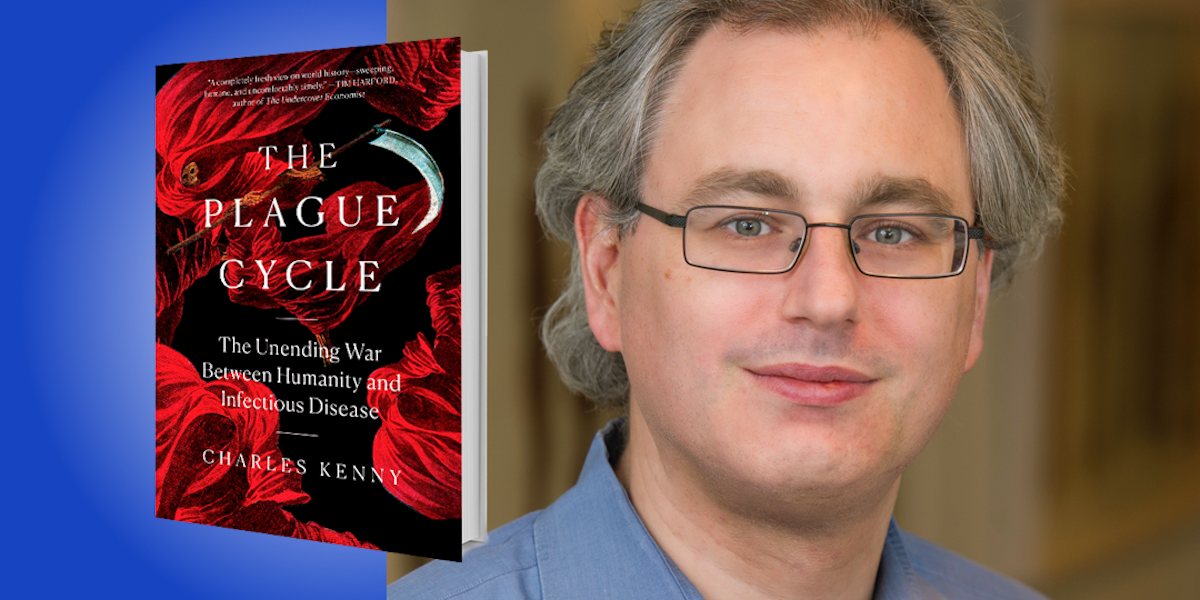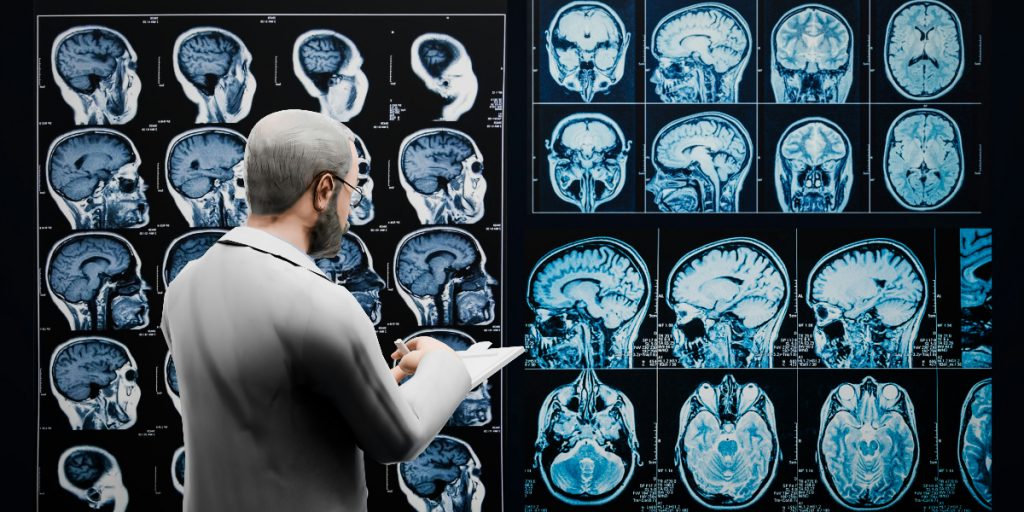Charles Kenny spent fifteen years as an economist at the World Bank, traveling the planet from Baghdad and Kabul to Brasilia and Beijing. He now works at a Washington DC think tank, the Center for Global Development, where he researches and advocates for policies governing investment, trade, technology, and migration that would be good for both developing and industrialized countries alike. He also writes for outlets including the Economist, the Wall Street Journal, the Washington Post, the Atlantic, and more.
Below, Charles shares 5 key insights from his new book, The Plague Cycle: The Unending War Between Humanity and Infectious Disease. Download the Next Big Idea App to enjoy more audio “Book Bites,” plus Ideas of the Day, ad-free podcast episodes, and more.
1. Civilization is bad for your health.
We can see the deadliness of diseases that spread in a densely populated world by looking at groups that are suddenly exposed to those diseases. Take recently contacted indigenous communities from the Amazon basin who have lived without both those infections, and the vaccines and other preventatives we’ve developed against them. On average, those communities shrink by 40% in the nine years after sustained contact with outsiders from the connected farms and cities of Brazil. People die from conditions including measles, pneumonia, and hepatitis.
Farming sustains larger populations, and allows them to live much closer together than foraging does. It also keeps them in the same place, and next to a bunch of domesticated animals. All of that is good for parasites, which can more easily move between victims and hop from species to another. Of course, densely packed cities are even more of a malignant microbe’s paradise, with new hosts around every corner.
2. For most of history, infection kept humans few, spread, and disconnected.
Since people first started to farm, infection has been responsible for the majority of human deaths. And as people got closer in towns and villages, diseases killed even more people—so much so that cities could only sustain their size by importing people from rural areas to replace the dead. Once that supply dried up—as empires collapsed, for example—cities would rapidly decline. The population of Rome fell by 90% as its empire crumbled.
“In 1900, the average person born on Earth could expect to live to the age of 33. By 2000, that expectation had doubled.”
Disease made exploration, trade, and conquest particularly fatal to both the conquered and the conqueror. The wholesale collapse of civilizations like the Aztec and Inca empires after the arrival of Columbus was hastened by conflict and abuse, but old-world infections did most of the killing. And while annual death rates for British troops stationed at home in the 1820s were around 15 deaths for every thousand troops, in India, they were two to five times as high as that. In the West Indies, they were six to nine times as high, and in West Africa, the death rates for British soldiers were 32 to 45 times as high as at home. Around half of those stationed in West Africa died each year, nearly all from disease. Under the circumstances, it was far safer to stick to the disease pool that you knew.
3. Declining infections led to global megacities and modern wealth.
The sanitation revolution began in Europe and North America in the 19th century. Sewage systems took human waste out of cities, and pipes and filter systems bought clean water in. Housing reforms, the spread of refuse collection, and a newfound obsession with cleanliness all reduced the spread of disease. Then the 20th century brought a global medical revolution: The invention and spread of vaccines against measles, tetanus, polio, and a range of other microbes; antibiotics that killed off bacteria before the bacteria could kill their victims; and cheap interventions like oral rehydration that fought off the deadly effects of diarrhea. In 1900, the average person born on Earth could expect to live to the age of 33. By 2000, that expectation had doubled.
“A single crowded New York subway car can hold about 250 people. Through much of history, the great majority of humans have lived in communities of that size or smaller.”
The decline of infectious death has made city living, in particular, considerably safer. In many of the world’s poorest cities today, most urban population growth isn’t due to migration like it was through most of history, but rather to city residents having children that survive longer than their rural cousins. That’s a complete reversal from the past, and helps to account for the global growth of cities. Today, the majority of the world’s population, four billion people, live in urban areas. And urbanization has always been a key to economic dynamism. Putting producers and consumers close to each other helps both benefit from scale and diversity: a better workforce, cheaper products, and more variety. Urban areas are also the centers of technology advancement because entrepreneurs and inventors learn from each other. In the United States, 96% of new product innovations occur in metropolitan areas. Half of the world’s population that lives in towns and cities generates more than 80% of global output.
4. We face pandemic risks more than ever before.
It would be great to think that COVID-19 was a one-off, but since 1970, we’ve seen the emergence of a host of new infections, as well as re-emerging and evolving diseases. That’s because connections and close living are still the spur to infectious death that they’ve always been, and we’re more close and more connected than ever before. A single crowded New York subway car can hold about 250 people. Through much of history, the great majority of humans have lived in communities of that size or smaller. And in an age before motorized transport or decent roads, many people barely left their village. Today, diseases are far more likely to find new hosts before they burn out.
“We are simply too close and connected to rely on closing borders to protect us.”
Add to that the burgeoning population of farm animals, the original source of some of our most deadly infections. The number of chickens worldwide, for example, has climbed from 3.9 billion in 1961 to 21.7 billion today. More than three quarters of those chickens are raised in huge factory farms, and those farms often use antibiotics that speed growth, but also give microbes a leg up in developing resistance to the medicines meant to kill them.
Finally, over longer distances, the old mechanisms of disease spread have sped up as well. When tourists can travel around the world in a day or two, so can their diseases, and more than a billion international trips are taken worldwide in the course of a normal year. The global world of cities supports a considerably higher quality of life for humanity, but 2020 has demonstrated that it can be brought to its knees by emerging infection.
5. The only way we can stay safe in the future is to get closer.
We are simply too close and connected to rely on closing borders to protect us. Since we can’t and shouldn’t go back to a human population that is few, spread out, and disconnected, the only solution to our infectious challenge is to use the immense innovative power of our connected world to develop more effective responses to new disease threats. That means improving sanitation in cities, establishing non-factory farms, and using our existing tools, from antibiotics to vaccination, with the care and the urgency they deserve. And when it comes to new outbreaks, it means the rapid introduction of track and test regimes, along with quarantine systems that stop spread within countries. It means speeding up research and delivery of tests, treatments, and vaccines. And crucially, it means global cooperation to tackle microbes that have no respect for borders.
For more Book Bites, download the Next Big Idea App today:
































